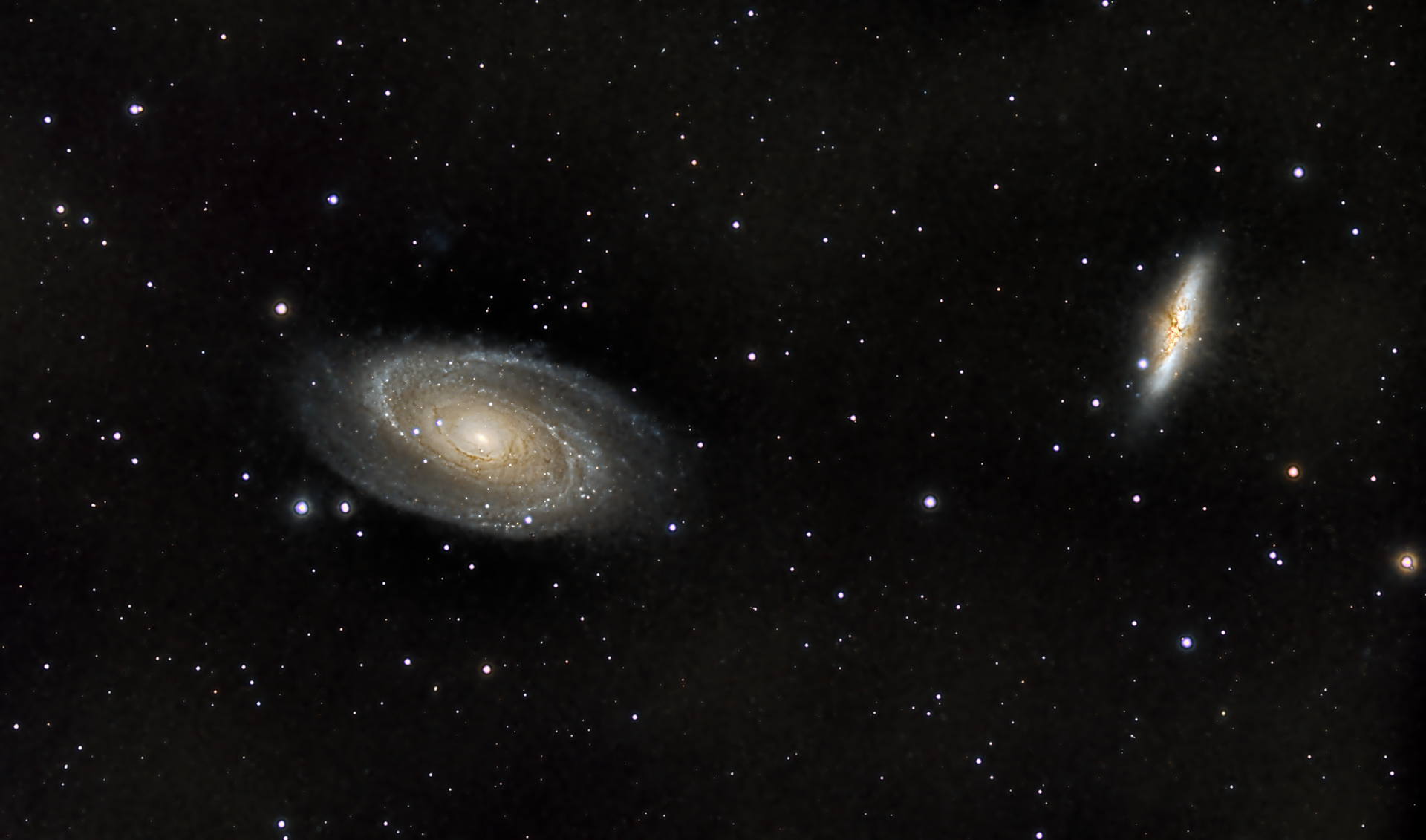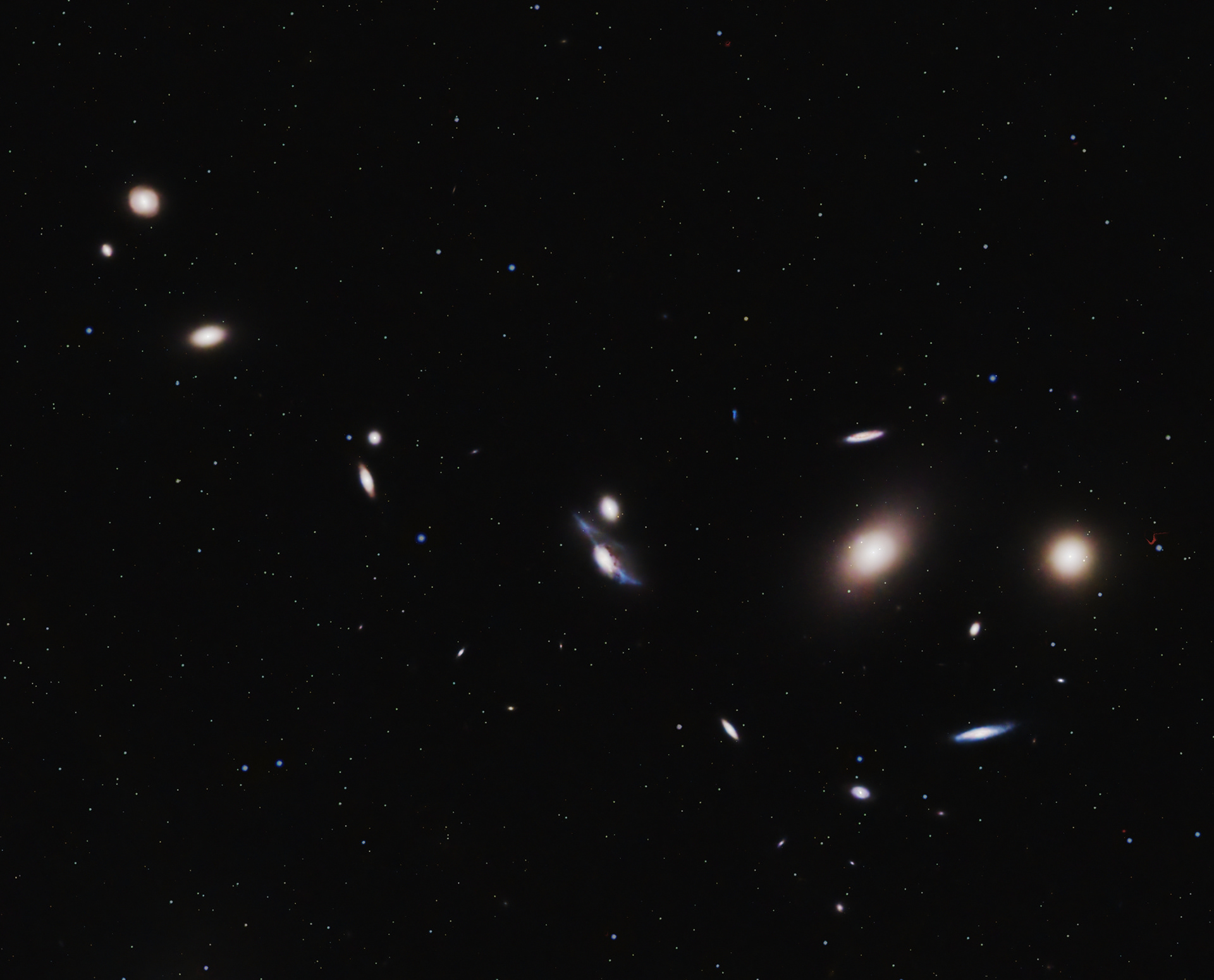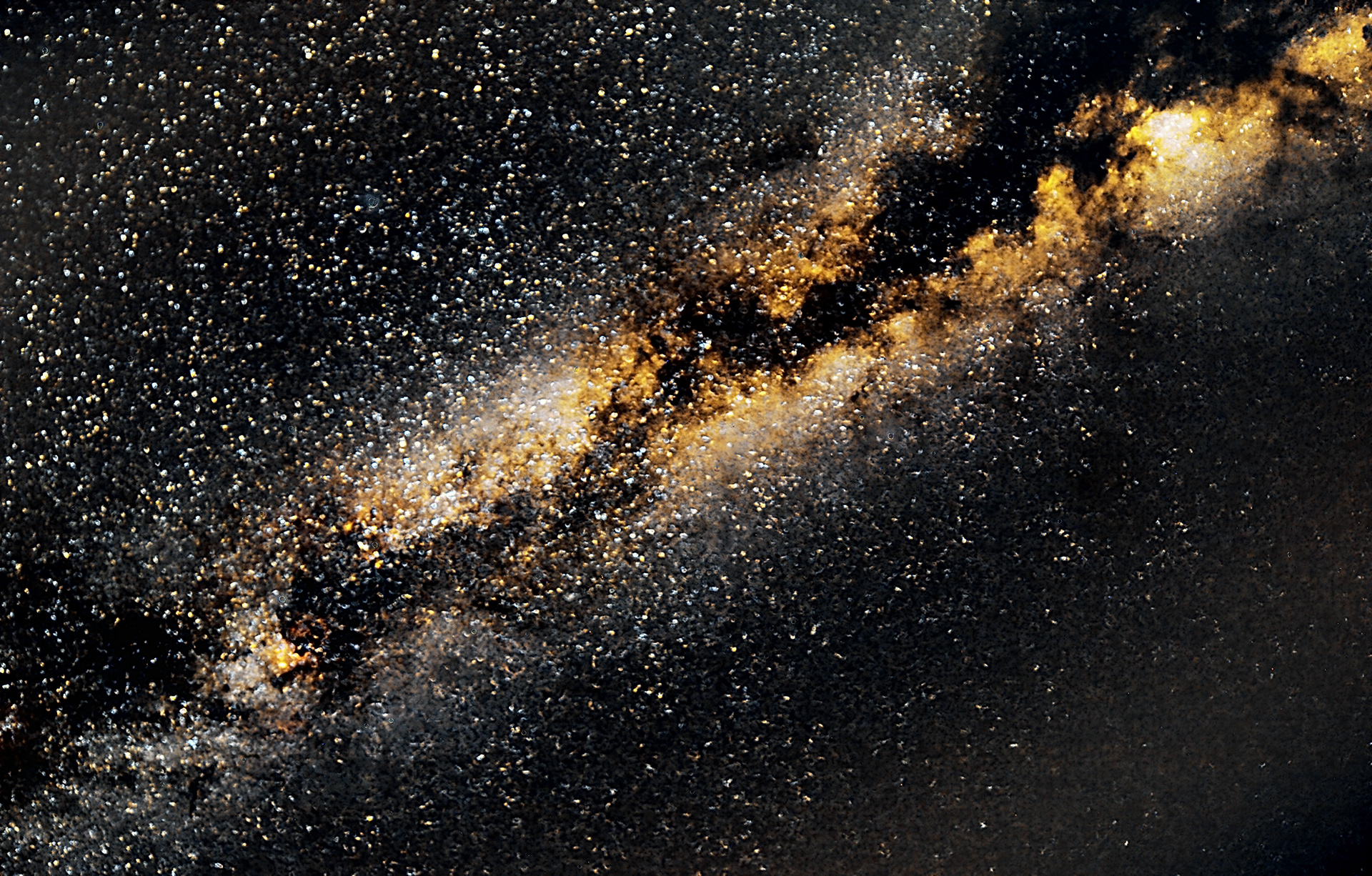
M31, Andromeda Galaxy, from Lockwood Valley, California.

M51, the Whirlpool Galaxy. Located 31 million lightyears from earth, this spiral galaxy collided with the small NGC 5195 billions of years ago. The image shows the interaction of these huge galaxies! (45 hours of exposure time)

The Triangulum Galaxy, M33, is a spiral galaxy 2.73 million light-years from Earth in the constellation Triangulum. It is cataloged as Messier 33 or NGC 598. It is 30,000 light years across, and contains 40 billion stars (I counted them!!). The red regions within the galaxy are areas that are showing active new star development.

M81 and M82, a pair of galaxies about 11.5 million light years away from earth. The large spiral is often called Bode's Galaxy, and the smaller is known as the Cigar Galaxy. The dark bands in the cigar are Hydrogen bands where stars are forming. About 1000 images were used taken to make up this final photo!

M81, Bode's Nebula. This is actually a galaxy, but early observer mis-named it as a Nebula. — at Lockwood Valley, California.

M101, the Pinwheel Galaxy — at Lockwood Valley, California.

NGC 2903 is an isolated barred spiral galaxy in the constellation of Leo. It was discovered by astronomer William Herschel, who cataloged it in 1784. He mistook it as a double nebula, as did subsequent observers, and it wasn't until the nineteenth century that it was resolved into a spiral galaxy. For that reason, it has two identifiers: NGC 2903 and 2905. This galaxy is located about 30 million light-years away from our own Milky Way galaxy.

M104 Sombrero Galaxy - a peculiar galaxy of unclear classification in the constellation borders of Virgo and Corvus, being about 31.1 million light-years from the Milky Way galaxy. It has a diameter of approximately 49,000 light-years, three-tenths the size of the Milky Way. It has a bright nucleus, an unusually large central bulge, and a prominent dust lane in its outer disk, which is viewed almost edge-on. The dark dust lane and the bulge give it the appearance of a sombrero hat (thus the name). This was a combination of images taken with Red, Green, Blue, and Luminance filters.

Messier 64 (M64), also known as the Black Eye Galaxy, Evil Eye Galaxy, or Sleeping Beauty Galaxy, is a famous spiral galaxy located in the constellation Coma Berenices. It gets its name because with certain processing the center bulge has darker matter on the earth facing side, like a black eye. I chose to process it to show the full extent of the galaxy. Actually, galaxies, as what we see is the result of a collision of two galaxies about a billion years ago. This resulted in the inner bands rotating in the opposite direction as the outer bands! Messier 64 has an apparent magnitude of 9.36 and lies at a distance of 24 million light years from Earth. It contains and estimated 100 billion stars!

M65 & M66 Galaxies are intermediate spiral galaxies about 35 million light-years away in the constellation Leo. It was discovered by Charles Messier in 1780.

NGC 891, an edge view of a spiral galaxy. It is about 30 million light-years away in the constellation Andromeda. — at Lockwood Valley, California.

NGC3628, the Hamburger Galaxy. The third element of the Triplet. — at Lockwood Valley, California.

Markarian's Chain is a stretch of galaxies that forms part of the Virgo Cluster. When viewed from Earth, the galaxies lie along a smoothly curved line. Charles Messier first discovered two of the galaxies, M84 and M86, in 1781.

The Virgo Cluster is a large cluster of galaxies in the constellation Virgo. Comprising approximately 1,300 (and possibly up to 2,000) member galaxies, the cluster forms the heart of the larger Virgo Supercluster, of which the Local Group (containing our Milky Way galaxy) is a member.

A high contrast view of the Milky Way, our own galaxy!




















